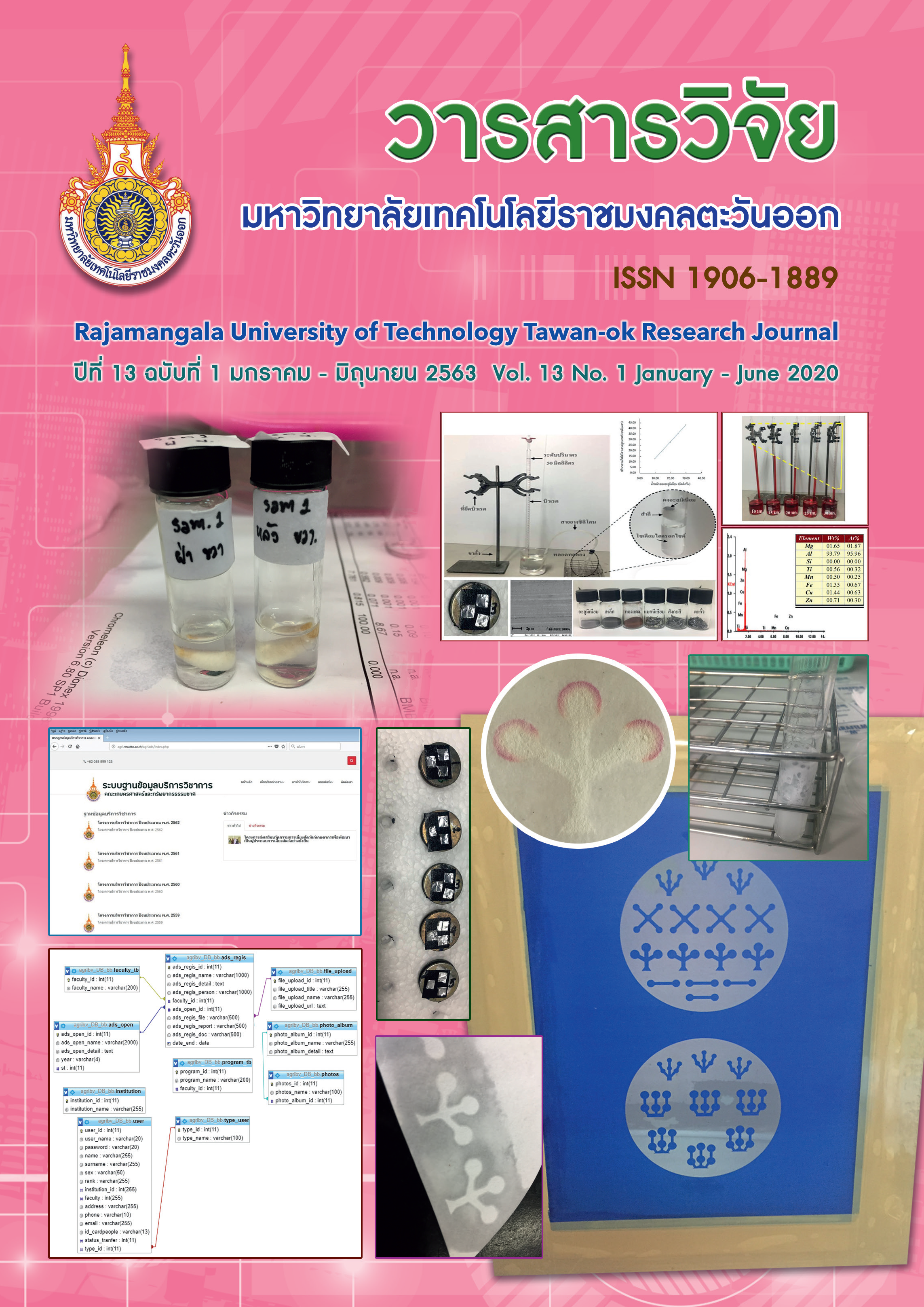Gas Chromatography – Flame Ionization Detector (GC-FID) Identification of gasoline on arson suspects’ shoes by the technique of Gas Chromatography-Flame Ionization Detector
Main Article Content
Abstract
Arson fire is one of the most dangerous crime that is difficult to investigate. Detection of gasoline residue can provide important information to link evidence with an arson suspect. The objective of this project was to study the application of chromatography-flame ionization detector technique (GC-FID) to the detection of gasoline vapor on suspect’s sneaker sole. In this work, 100 μl of gasoline liquid was dropped on the soil surface, concrete and tile floors. Samples were taken from sneakers that were worn by a volunteer and stepped on the substrates for 30 seconds. The sample of gasoline vapor was collected by using activated carbon packed in a tea bag. The samples were taken immediately and at 1 h., 3 h., 6 h, 12 h. 16 h., and 24 h. after stepping on the substrates. The peaks of benzene, toluene, o-xylene, p-xylene and ethyltoluene in the chromatogram of the sample were used to identify the gasoline. The gasoline vapor was detected in all samples even in the samples taken 24 h. (8.06-8.48 ppm) after the deposition of gasoline liquid. For the samples collected immediately after gasoline deposition, the higher amount of the gasoline vapor was found in the tile-floor sample (30.11 ppm) compared to that in the soil-surface sample (12.83 ppm). Moreover, a sharp drop in the amount of gasoline was observed in all samples collected at a longer period than one hour after the deposition of gasoline. However, the gasoline content remained constant (approximately 8-10 ppm) in all samples collected at 6 h. to 24 h. after gasoline deposition. The results obtained demonstrate the potential of this methodology to help in detection of gasoline on the suspect’s sneaker in arson cases.
Article Details
References
Almirall, J. R., J. Wang, K. Lothridge and K.G. Furton. 2000. The detection and analysis of ignitable liquid residues extracted from human skin using SPME/GC. Journal of Forensic Science International 45 (2), (June): 453-461.
Becker R., M. Koch, S. Wachholz and T. Win. 2002. Quantification of total petrol hydrocarbons (TPH) in soil by Infrared Spectrometry and Gas Chromatography - conclusions from three proficiency testing rounds. Journal of Accreditation and Quality Assurance. 7, (March): 286-289.
Chaiyavech P. 2009. Petroleum Technology. 2nd ed. Chulalongkorn University Press., Bangkok (in Thai)
Coulson, S. and R. Morgan-Smith. 2000. The transfer of petrol on to clothing and shoes while pouring petrol around a room. Journal of Forensic Science International 112, (March): 135-141.
Coulson, S., R. Morgan-Smith, S. Mitchell and T. McBriar. 2008. An investigation into the presence of petrol on the clothing and shoes of members of the public. Journal of Forensic Science International. 175, (June): 44-54
Darrer, M., J. Jacquemet-Papilloud and O. Delémont. 2008. Gasoline on hands: Preliminary study on collection and persistence. Journal of Forensic Science International. 175, (August): 171-178.
Jugjai S. 2004. Combustion. Chulalongkorn University Press., Bangkok. (in Thai)
Li Y., L. Wang, J. Yan, D. Liang and H. Shen. 2014. Persistence study on gasoline compound in soil matrix and its application in fire investigation. Procedia Engineering, 71, 600-605
Montani I., S. Comment, and O. Delémont. 2010. The sampling of ignitable liquids on suspects’hands. Journal of Forensic Science International. 194, (January): 115-124.
Muller D., A. Levy , and R. Shelef. 2011. Detection of gasoline on arson suspects’ hands. Journal of Forensic Science International. 206, (August): 150-154.
Raruenrom J. 2008. Application of activated carbon to the identification of flammable liquids. Master’s degree in forensic science program. Graduate school. Silpakorn University. (in Thai)
Smale T., I. Arthur and D. Royds. 2014. A comparison of techniques for extracting ignitable liquid residue from concrete. Australian Journal of Forensic Sciences 46, (September): 216-223.
Soonkum T. 2015. Identification of gasoline on the arsonist’s hands and clothes by the technique of gas chromatography-flame ionization detector (GC-FD). Master’s degree in forensic science program. Graduate school. Silpakorn University. (in Thai)
Stauffer E., J.A. Dolan and R. Newman. 2008. Fire Debris Analysis. 1st ed. Academic Press., Massachusetts


